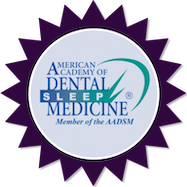Symptoms and Causes of Craniofacial Pain
What does it mean when you are diagnosed with chronic craniofacial pain? It means your trigger points are the primary source of your pain symptoms. Unfortunately, it isn’t as easy as 1, 2, 3 to come up with that diagnosis. When it comes to craniofacial pain, the symptoms often mirror other conditions. As a result, you might receive a different diagnosis based on what your symptoms are displaying as. To help, here are some signs, symptoms and causes of craniofacial pain that you should keep in mind.
What are the signs and symptoms?
Is there a place that is tender or painful when pressure is applied? If so, this might be a sign of craniofacial pain. When pressure on a trigger point causes a sensation of shooting pain in nearby muscles, such as the back to the neck or shoulders, that is another sign that something is wrong. The trigger point can also feel like a hard knot of tissue when you touch it.
The pain experienced is often described as dull or achy but can also feel like burning muscle pain and soreness or numbness. These pains often are characterized by a sensation of referred pain, meaning it feels like the pain is somewhere it is not. This is more apparent to someone with experience. Through a physical exam by your doctor, the present craniofacial trigger points can be uncovered.

What causes craniofacial pain?
Muscle injury or repetitive strain are often the main causes of craniofacial pain because they tend to activate those trigger points. We can also look at psychological stressors and physician strain as causes too. This is because both can increase muscle tension along fibers referred to as the taut band—it is the hardened ropelike stretch of muscle fibers that triggers are present. One other cause is from postural stressors, including poor body posture that is held for prolonged periods of time. The most common culprit of this? Sitting at a desk for an extended period of time.
Who is at risk for craniofacial pain?
There is not one single cause of craniofacial pain, which can make diagnosis difficult. However, we do know who is typically more at risk of experiencing craniofacial pain. Those who are at higher risk include:
- Women: 55% of women have latent trigger points—a sensitive spot with pain or discomfort only provoked in response to compression—compared to 45% of men.
- Middle-age adults: At younger ages, muscles can cope with the strain of stress and overuse better than when you’re a middle-aged adult or senior.
- Injured individuals: Your odds of developing or activating craniofacial trigger points continues to increase for every injury, trauma or illness that occurs.
- Stressed persons: Craniofacial trigger points can become aggravated from stress or anxiety, leading to increased muscle tension.
- Inactive people: For those who live a sedentary lifestyle or significant time spent in poor posture, it can weaken and strain muscles. This increases your chances of activating a craniofacial trigger point.
One way to reduce your risk is to have well-conditioned, strong muscles. When this is the case, you can easily handle daily activities and move into a lower risk for developing craniofacial pain. The healthier you are and more active you are, the better you can protect yourself from pain and injury.
We all carry some risk for craniofacial pain symptoms but improving physical and mental health can significantly help reduce your risk for this condition.
Contact Us Today
Our Hours:
Monday: 8am-5pm
Tuesday: 8am-5pm
Wednesday: 8am-5pm
Thursday: 8am-2pm



